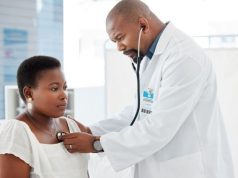Depression screening increased from 40.5 percent in 2017 to 88.8 percent in 2019; increases in screening seen in all at-risk groups
FRIDAY, Aug. 19, 2022 (HealthDay News) — Depression screening increased after implementation of a general screening program in 2017, according to a study published online Aug. 18 in JAMA Network Open.
Maria E. Garcia, M.D., M.P.H., from the University of California in San Francisco, and colleagues examined depression screening rates among populations at risk for undertreatment of depression in a cohort study of electronic record data from 52,944 adults at six primary care facilities from Sept. 1, 2017, to Dec. 31, 2019. Depression screening rates were assessed after implementation of a general screening policy.
The researchers observed an increase in depression screening from 40.5 percent at rollout in 2017 to 88.8 percent in 2019. The likelihood of being screened decreased with increasing age in 2018 (adjusted odds ratios, 0.89 and 0.75 for ages 45 to 54 years and 75 years and older versus 18 to 30 years, respectively). Patients with limited English proficiency, except for Spanish-speaking patients, were less likely to be screened for depression than English-speaking White patients (adjusted odds ratios, 0.59 and 0.55 for Chinese language preference and other non-English preference, respectively). Depression screening had increased for all at-risk groups by 2019, and disparities had disappeared for most; lower odds of screening were still seen for men versus women (adjusted odds ratio, 0.87).
“Given well-documented depression care disparities for men, racial and ethnic minority individuals, patients with language barriers, older patients, and patients with public insurance, a focus on implementing depression screening and initial depression treatment in primary care may help to improve depression recognition and appropriate treatment for all patients,” the authors write.
Copyright © 2022 HealthDay. All rights reserved.








